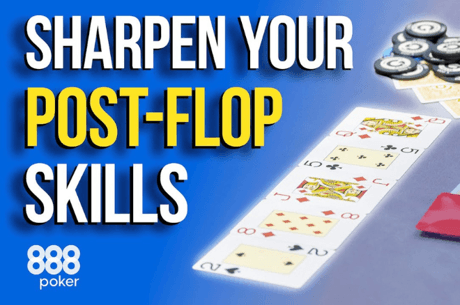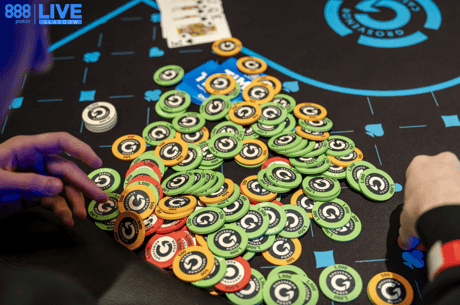Thinking About Lines Used by Pluribus the Poker Bot, Part 3

Time to finish my deep dive into attempting to read a computer's mind.
After two weeks of hiatus — I got distracted trying to win $280K — I'm back with the a look at the final hand showcased by the creators of the poker-playing computer program (or "AI") Pluribus. If you're unfamiliar, Pluribus was revealed in July to be a bot requiring only a cheap CPU to run that also happened to destroy a handful of world-class players in six-max no-limit hold'em.
This has obviously scary potential consequences for poker players the world over, but for the moment, we're trying to use the released hand histories to our advantage by examining them and attempting to divine the reasoning behind Pluribus' moves. In the first hand, we considered a monster overbet bluff by Pluribus, and then in a second we looked at its handling of a top pair, decent kicker situation when defending the big blind versus a button raise.
Finally, we'll look at how Pluribus handles a four-bet pot in position with a weak hand.
Hand #3: Pluribus Four-Bets Ace-Seven Suited
Hand Details
The first two players folded to Pluribus who was in the cutoff with A♠7♠. Pluribus made it $225 to go and the player in the small blind three-bet to $1,050 with A♥J♣. Pluribus reraised to $2,150 and the small blind called.
The flop came 10♠7♦4♦ and the small blind checked. Pluribus checked back, bringing the 8♠ on the turn. The small blind bet $2,400. Pluribus called, and the river was the 2♥. The small blind shoved for $5,450 and Pluribus called.
Thoughts and Possible Implications
In my opinion, this hand isn't quite as interesting as the other two, but given that we only received three hands from the Pluribus team, it's still worth looking at and trying to analyze.
Things begin with Pluribus making a small open to $225 in the cutoff. It's notable that the bot opens on the smaller side even in a deeper-stacked game, where most live players are opening to $300 or $400 in this spot.
In any case, the open is met with a three-bet from the small blind to about four times Pluribus' raise. Smaller suited aces are generally considered to be good four-bet bluffing candidates because they block some nutted hands and they have some playability when called. Pluribus' learning process has apparently resulted in an affirmation of this maxim, as it attempts a four-bet bluff with A♠7♠.
What's most interesting about the four-bet bluff is its sizing. Pluribus only raises to about two times the opponent's bet. I wonder how Pluribus would handle a deeper-stacked situation, but certainly making smaller four-bets is perfectly valid, as it doesn't leave the opponent much in the way of implied odds due to the shorter stacks left behind.
If Pluribus had, for example, aces here, there wouldn't be much worry about taking a bad beat after getting about 20 percent of stacks in already and having a stack-to-pot ratio of about 2-to-1. The downside is that when Pluribus has a hand like this and is up against something like Q♥10♥, opponents may call correctly and realize their equity.
In the actual hand, Pluribus is fortunate enough to flop its three-outer, good for second pair along with a backdoor flush draw. In this spot, when checked to, most players are going to range bet this flop. That is, they'll bet their entire range for about a third of the pot. Once you've put in a four-bet, the thinking goes, you've represented a very strong hand and you may as well keep representing it. Plus, with only a pair of sevens, the hand could use some protection from overcards.
Pluribus apparently does not agree as it opts to check back. In many single-raised pots, this would be a fairly standard play. You don't really want to get check-raised, and you have to check back some hands where you can call a turn bet or your opponent can simply click bet on many turns and print money against you. It's interesting that Pluribus has determined checking back second pair and a backdoor flush draw to be optimal in a four-bet pot, even when it's only a pair of sevens.
The turn brings in draws for both players, a gutshot for the small blind and the flush draw for Pluribus. Facing a turn bet of about half-pot, Pluribus opts to call. I think this play is best, as shoving here would likely be snap-called by better hands. After all what strong hands are checking the flop aside from maybe a set?
The river card is a brick and the small blind makes what is, in my opinion, a very good bluff. With A♥J♣ the player has the bottom of his range, he blocks the nuts, and he has zero blockers on either flush draw, meaning it's more likely the opponent has a flush draw that missed — one that may or may not beat him.
In the most interesting decision of the hand, Pluribus decides to call the shove. Pluribus needs to call $5,450 into a pot of $14,650. The bot is getting a little less than 2.7-to-1, meaning it has to be facing basically a zero-equity bluff — only an eight being turned into a bluff would win against A♠7♠ — 27 percent of the time for a call to show a profit.
What makes this so fascinating is that A♠7♠ is actually not an ideal bluff catcher. From a theory standpoint, the hands you'd expect to see as bluffs would be hands with a jack or nine in them and missed flush draws. Well, Pluribus is blocking one of the flush draws that would probably bet turn and shove river.
Still, apparently it considers the odds too good to pass up with a pair of sevens. Many players nowadays like to be very careful picking off bluffs in spots where they don't have relevant blockers. Pluribus actually is blocking some bluffs rather than value hands yet it still opts to go for the bluff catch, successfully as it turns out.
Perhaps this means many players are underestimating simple pot odds and overestimating blockers in these spots? I'm not really sure, but it's something to think about next time you're facing a shove and considering whether to call against a capable opponent.










